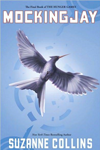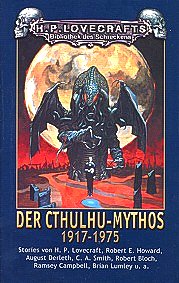
Search
Categories
Famous Authors
Top Selling Books

Book Home ![]() Books Information
Books Information ![]() Cthulhu mythos
Cthulhu mythos
Cthulhu mythos
|
Cthulhu mythos is the term coined by the writer August Derleth to describe the shared themes, characters, and elements in the works of H.P. Lovecraft, his protegés, and writers influenced by him. Together, they form the mythos that other authors can use to craft their stories. The mythos is centered on the Great Old Ones, a fearsome assortment of deities led by the dreaded Cthulhu (though there are other beings in the mythos that are even more monstrous). Cthulhu lies in hibernation in the lost, sunken city of R'lyeh. One day, Cthulhu will awaken "when the stars are right" and will wreak havoc on the earth. Derleth's involvement As Lovecraft conceived the deities or forces of his
Mythos, there were, initially, the Elder Gods . . . these Elder Gods
were benign deities, representing the forces of good, and existed
peacefully at or near Betelgueze in the constellation Orion, very
rarely stirring forth to intervene in the unceasing struggle between
the powers of evil and the races of Earth. These powers of evil were
variously known as the Great Old Ones or the Ancient Ones. Lovecraft was an atheist and claimed that Kant's ethical system "is a joke." Because of this, Derleth's theories about the "Cthulhu mythos" are inconsistent with Lovecraft's design. The mythos was never intended to be a cohesive, singular entity; instead, it should be regarded as simply a collection of ideas that can be used in separate works to provoke the same emotions. Another problem with Derleth's mythos is that the Elder Gods never appear in Lovecraft's writings; except for one or two who appear as "Other Gods", such as Nodens in Lovecraft's "The Strange High House in the Mist" (though perhaps this is an example of how "very rarely [they stir] forth"; i.e., usually never). Furthermore, the Great Old Ones, or Ancient Ones, have no unified pantheon. Indeed, the term "Ancient Ones" appears in only one Lovecraft story, "Through the Gates of the Silver Key" (moreover, the story is actually a collaboration between Lovecraft and his friend and correspondent E. Hoffman Price). Derleth also introduced the concept of elementals, tying the deities of the mythos to the four elements of "air", "earth", "fire", and "water". This system left gaps which Derleth filled in by creating the beings Cthugha and Ithaqua, representing the spheres of "fire" and "air", respectively. However, the system is fraught with problems. For example, Derleth classified Cthulhu as a water elemental, but if this were so, how could he be trapped beneath the ocean? Another problem is that Derleth matched the "earth" beings against the "fire" beings and the "air" beings against the "water" beings, which is not consistent with the traditional elemental dichotomy (namely, that air opposes earth and fire opposes water). To his credit, Derleth became a publisher of Lovecraft's stories after his death. Lovecraft himself was very critical of his own writings and was often easily discouraged, especially when faced with any rejection of his work. Were it not for Derleth, Lovecraft's writings and the Cthulhu mythos might have remained largely unknown. |
